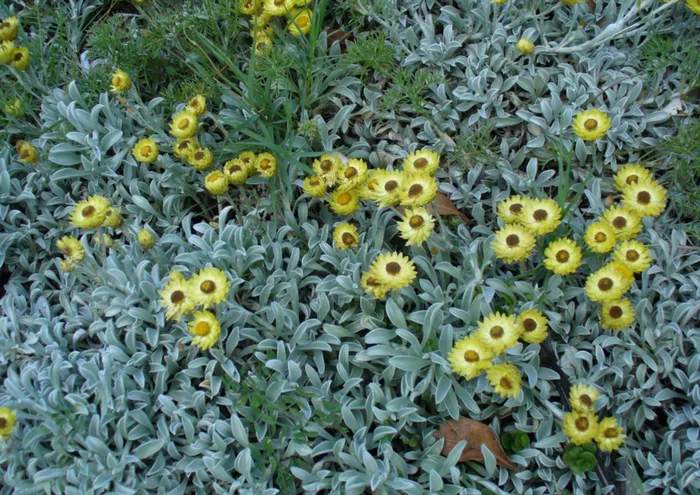How to protect plants from harsh sun

The Golden Guinea Everlasting (Helichrysum argyrophyllum). The Golden Guinea Everlasting (Helichrysum argyrophyllum).
“Gardeners have three weapons to use against summer drought: mulches, watering pots and prayers.” – Tyler Whittle
The mulching of flowerbeds has long been used by gardeners to cope with our hot, windy summers. There is another way, too, that should help – planting hardy, drought-resistant groundcovers. These have the added advantages of binding the soil and thus reducing erosion, suppressing hungry weeds and providing a good display. And, as mulches tend to do, they help to retain moisture in the soil.
Groundcovers with silvery foliage are well-suited to hot, dry areas. They look particularly good when contrasted with a plain green colour as found in some of the spreading cotoneasters and cypresses as well as Coprosma kirkii. They often have the extra benefit of colourful blooms, as in the case of our indigenous Arctotis acaulis, which has daisy-like flowers in shades from cream to wine. There are some indigenous Gazanias, too, with silver leaves that have orange and yellow flowers. The Golden Guinea Everlasting (Helichrysum argyrophyllum) is a stunner from the Eastern Cape. Its silvery-grey leaves look splendid with its summer bursts of yellow flowers.
From further afield comes Lotus berthelotii from the Canary Isles. This is totally unrelated to the water-loving Sacred lotus, whose botanical name is Nelumbo nucifera. Lotus berthelotii has fine silver leaves and bears masses of brilliant orange-red shrimp-like flowers. It looks striking surging over retaining walls. Surprisingly, it grows from just one central root and one plant will cover a large area. It is supposed to be easy to propagate, though so far, I have not found this to be so.
Snow-in-summer (Cerastium tomentosum) hails from southern Europe. It has small, silver-grey leaves and white, starry flowers. Unlike the lotus, it suckers and spreads rapidly forming a dense mat even in quite poor soil.
Grass-like plants are becoming increasingly popular. If this is your preference, in flat area you could plant tufts of blue-green Fescue grass (Festuca glauca), which is another European import.
All the above grow happily in full sun and well-drained soils. In their first year, however, they will need to be watered regularly to develop a strong root system. In mid-summer and autumn give them a sprinkling of fertiliser, such as 3.2.1 for foliage plants and 3.1.5 for woody ones. - Cape Argus